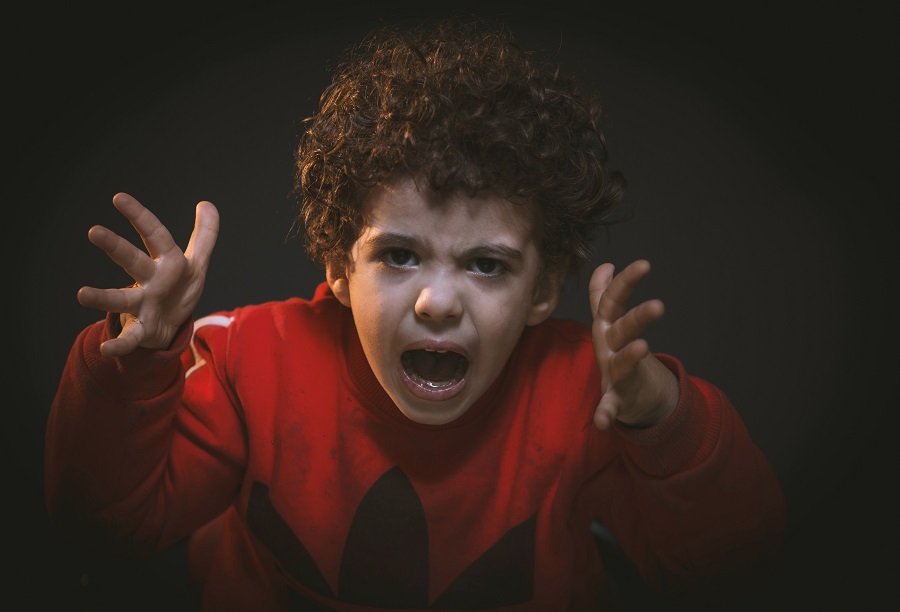Emotion regulation refers to the ability of being able to adjust as a response to change. Everyone feels strong emotions time to time, but a person with good self-regulation skill is able to control how they respond to such emotion. On the other hand, a person who is dysregulated are run by their emotion.
Emotion regulation challenges are common amongst autistic children and teen and may result in both externalizing (e.g., aggression, hyperactivity) and internalizing (e.g., anxiety, depression) emotional problems. Children with Autistic Spectrum Disorder (ASD) often use maladaptive emotion regulation strategies such as venting, avoidance, and rumination in frustrating situations but the good news is that parents can learn to teach their children emotion regulation skills.
A young child is frequently unable to regulate their emotions and need the help of another person for this. Co-Regulation refers to warm interactions in which an adult provides the support, coaching, and modelling that a child needs to express, and modulate their emotions. This kind of supportive process between caring adult and a child fosters the development of self-regulation skills in a child. So that over time a child moves from relying on others to regulate their emotions to being able to regulate their emotions themselves.
Do you know how to self-regulate?
Parent who does not know how to self-regulate their emotions naturally cannot teach their child these skills. That is why the first step in teaching an autistic child to co-regulate is to make sure that you can do it yourself. In order to do that you need to:
• Pay attention to your own feelings. How does sadness or anger feel in your body? What kind of situations make you feel angry or afraid?
• Think what kind of attitudes do you have about emotions? Is it OK to show your emotions in public? What would better ways to express your anger than the ones you currently use?
• Use self-regulating strategies such as meditation, breathing exercises, progressive muscle relaxation to calm yourself and to feel more compassion towards other people.
How a parent can help child to co-regulate
There are three ways that the parents can help their child to co-regulate:
1. Provide a warm, responsive relationship
Studies show that a warm, sensitive parent can help an autistic child or teen feel safe so that they can start practicing self-regulation skills and don’t feel discouraged even when their early attempts are not always successful. Giving plenty of praise, encouragement, and being able to redirect child’s attention are some of the tools a parent can use to provide their child a safe place to regulate. It is important that a parent pays close attention to how their child shows that they feel stressed, or
are dysregulated, and let them know that regardless of how the child behaves the adult will always be there to love and support them.
2. Build an environment that makes self-regulation easier for the child
A caring parent should provide an autistic child an environment in which they can feel safe and accepted. This means using predictable routines and giving child easy to understand expectations for their behaviors. Likewise, child’s challenging behaviors should always have the same consequences such as removing a reward, regardless of how tired the parent might be, for example.
3. Model self-regulation skills
Parent of an autistic child should talk about emotions with their child. These discussions should tell the child how to identify emotions and what kind of signs in their body tell them that they might be feeling a certain emotion. A child should learn that all emotions are acceptable but how we respond to them is a choice that we can make. Parents should also model the tools and methods that they themselves uses when they feel strong emotions. A child should learn by observing how parent act what they feel overwhelmed by fear or anger. A parent should also give their child clear behavior regulation goals, and parents should offer their child ample opportunities to practice emotion regulation skills in a loving accepted environment where making mistakes is accepted.
How much co-regulation is needed?
An autistic toddler, school aged child, and a teen are likely to need a very different amount of co- regulation help from a parent or a care-taker. In general, a young child needs a lot more help than a
young adult, but challenging situations or life transitions are likely to push even a young autistic adult to need more co-regulation. There are also individual differences such as temperament that affects how much co-regulation support a person might need.
When should you move to self-regulation?
Once the parent has been using co-regulation methods for a while and the child seems to benefit from such techniques, it is time to start build the bridge to self-regulation in which the child is able to regulate themselves without the help of the parent. Many autistic children benefit from the use of visual support that show various calming methods.
Reference list
Murray, D.W., K. Rosanbalm, C. Chrisopoulos, & A. Hamoudi (2015). Self-Regulation and Toxic Stress: Foundations for Understanding Self-Regulation From an Applied Developmental Perspective. OPRE Report #2015-21. Washington, DC: Office of Planning, Research and Evaluation, Administration for Children and Families, US Department of Health and Human Services.
Ting, V., & Weiss, J. A. (2017). Emotion Regulation and Parent Co-Regulation in Children with Autism Spectrum Disorder. Journal of autism and developmental disorders, 47(3), 680–689.
https://doi.org/10.1007/s10803-016-3009-9








